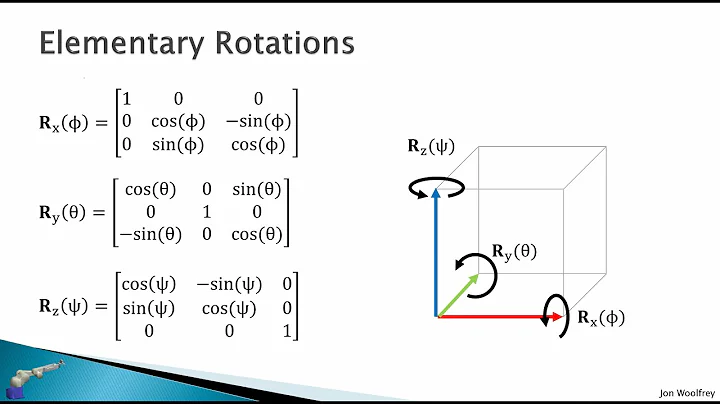How to standard scale a 3D matrix?
Solution 1
You'll have to fit and store a scaler for each channel
from sklearn.preprocessing import StandardScaler
scalers = {}
for i in range(X_train.shape[1]):
scalers[i] = StandardScaler()
X_train[:, i, :] = scalers[i].fit_transform(X_train[:, i, :])
for i in range(X_test.shape[1]):
X_test[:, i, :] = scalers[i].transform(X_test[:, i, :])
Solution 2
With only 3 line of code...
scaler = StandardScaler()
X_train = scaler.fit_transform(X_train.reshape(-1, X_train.shape[-1])).reshape(X_train.shape)
X_test = scaler.transform(X_test.reshape(-1, X_test.shape[-1])).reshape(X_test.shape)
Solution 3
If you want to scale each feature differently, like StandardScaler does, you can use this:
import numpy as np
from sklearn.base import TransformerMixin
from sklearn.preprocessing import StandardScaler
class NDStandardScaler(TransformerMixin):
def __init__(self, **kwargs):
self._scaler = StandardScaler(copy=True, **kwargs)
self._orig_shape = None
def fit(self, X, **kwargs):
X = np.array(X)
# Save the original shape to reshape the flattened X later
# back to its original shape
if len(X.shape) > 1:
self._orig_shape = X.shape[1:]
X = self._flatten(X)
self._scaler.fit(X, **kwargs)
return self
def transform(self, X, **kwargs):
X = np.array(X)
X = self._flatten(X)
X = self._scaler.transform(X, **kwargs)
X = self._reshape(X)
return X
def _flatten(self, X):
# Reshape X to <= 2 dimensions
if len(X.shape) > 2:
n_dims = np.prod(self._orig_shape)
X = X.reshape(-1, n_dims)
return X
def _reshape(self, X):
# Reshape X back to it's original shape
if len(X.shape) >= 2:
X = X.reshape(-1, *self._orig_shape)
return X
It simply flattens the features of the input before giving it to sklearn's StandardScaler. Then, it reshapes them back. The usage is the same as for the StandardScaler:
data = [[[0, 1], [2, 3]], [[1, 5], [2, 9]]]
scaler = NDStandardScaler()
print(scaler.fit_transform(data))
prints
[[[-1. -1.]
[ 0. -1.]]
[[ 1. 1.]
[ 0. 1.]]]
The arguments with_mean and with_std are directly passed to StandardScaler and thus work as expected. copy=False won't work, since the reshaping does not happen inplace. For 2-D inputs, the NDStandardScaler works like the StandardScaler:
data = [[0, 0], [0, 0], [1, 1], [1, 1]]
scaler = NDStandardScaler()
scaler.fit(data)
print(scaler.transform(data))
print(scaler.transform([[2, 2]]))
prints
[[-1. -1.]
[-1. -1.]
[ 1. 1.]
[ 1. 1.]]
[[3. 3.]]
just like in the sklearn example for StandardScaler.
Solution 4
An elegant way of doing this is using class Inheritance as follows:
from sklearn.preprocessing import MinMaxScaler
import numpy as np
class MinMaxScaler3D(MinMaxScaler):
def fit_transform(self, X, y=None):
x = np.reshape(X, newshape=(X.shape[0]*X.shape[1], X.shape[2]))
return np.reshape(super().fit_transform(x, y=y), newshape=X.shape)
Usage:
scaler = MinMaxScaler3D()
X = scaler.fit_transform(X)
Solution 5
I used Normalization scheme for my spatio-temporal data having shape of (2500,512,642) --> (samples, timesteps, features/spatial-locations). The following code can be used for Normalization and its inverse also.
def Normalize_data(data):
scaled_data = []
max_values = []
min_values = []
for N in range(data.shape[0]):
temp = []
t1 = []
t2 = []
for i in range(data.shape[1]):
max_val = np.max(data[N,i])
min_val = np.min(data[N,i])
norm = (data[N,i] - min_val)/(max_val - min_val)
temp.append(norm)
t1.append(max_val)
t2.append(min_val)
scaled_data.append(temp)
max_values.append(t1)
min_values.append(t2)
return (np.array(scaled_data), np.array(max_values), np.array(min_values))
def InverseNormalize_data(scaled_data, max_values, min_values):
res_data = []
for N in range(scaled_data.shape[0]):
temp = []
for i in range(scaled_data.shape[1]):
max_val = max_values[N,i]
min_val = min_values[N,i]
#print(max_val)
#print(min_val)
orig = (scaled_data[N,i] * (max_val - min_val)) + min_val
temp.append(orig)
res_data.append(temp)
return np.array(res_data)
Related videos on Youtube
JPM
Updated on July 19, 2021Comments
-
JPM almost 3 years
I am working on a signal classification problem and would like to scale the dataset matrix first, but my data is in a 3D format (batch, length, channels).
I tried to use Scikit-learn Standard Scaler:from sklearn.preprocessing import StandardScaler sc = StandardScaler() X_train = sc.fit_transform(X_train) X_test = sc.transform(X_test)But I've got this error message:
Found array with dim 3. StandardScaler expected <= 2
I think one solution would be to split the matrix by each channel in multiples 2D matrices, scale them separately and then put back in 3D format, but I wonder if there is a better solution.
Thank you very much. -
DmytroSytro almost 5 yearsIt doesn't work. Shouldn't it be like this:
for i in range(X_train.shape[1]): -
 Victor Sonck almost 5 yearsNo, I think it should be X_train[:, :, i] = scalers[i].fit_transform(X_train[:, :, i]). At least for me when my data is structured as (batch, samples, rows, columns)
Victor Sonck almost 5 yearsNo, I think it should be X_train[:, :, i] = scalers[i].fit_transform(X_train[:, :, i]). At least for me when my data is structured as (batch, samples, rows, columns) -
Avv almost 3 yearsThank you. Does this work on pandas frame columns? I have over 291 columns, so how we can apply same thing on pandas frame please?
-
Avv almost 3 yearsI have 291 columns in pandas dataframe, so I am wondering how we can apply same thing on pandas data frame please?
-
sugab over 2 yearsTrue! this is elegant, shortest, simplest.










